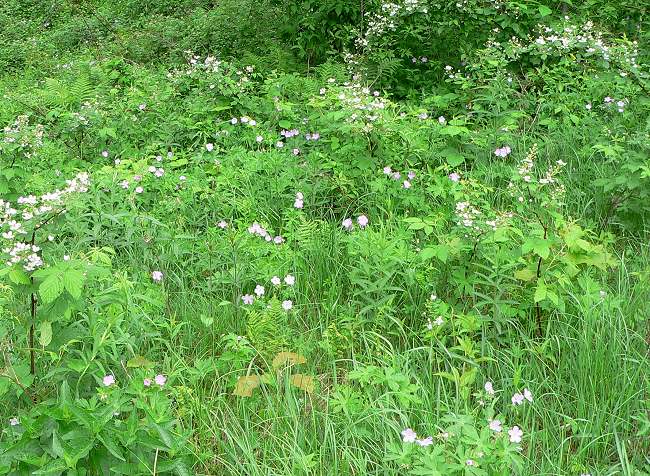The Indian Paintbrush (Castilleja coccinea) in Buffalo Ridge Prairie is thriving. While I was watching a hummingbird flew in for some nectar.
It’s fun to see hummingbirds nectaring in natural habitats, not just at feeders.
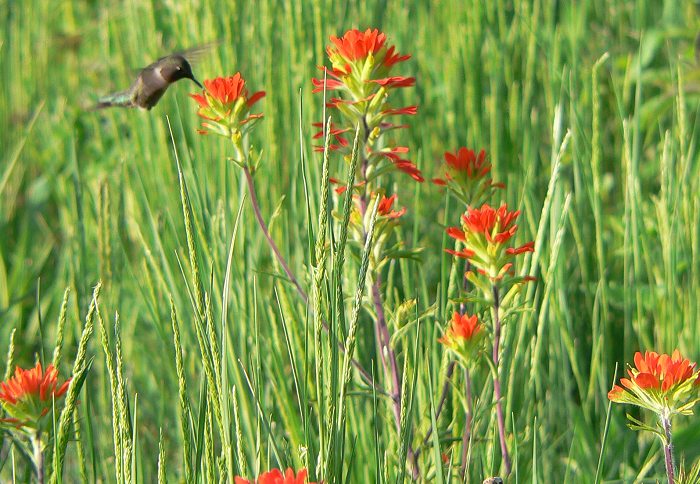

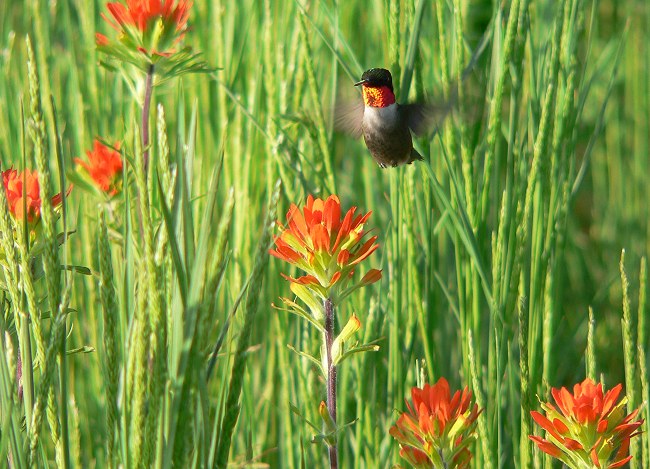
The flowers are perfect for hummingbirds – they’re tiny tubes with a red rim. The red parts of the plant look like flowers, but actually they’re modified leaves. Their bright red coloring attracts the hummingbirds’ attention.

I found Prairie Sage (Artemisia ludoviciana) growing in Buffalo Ridge Prairie. I’ve planted it in all the prairies, but only seeds that I’ve collected, and never very many, so it’s fun to find it growing.
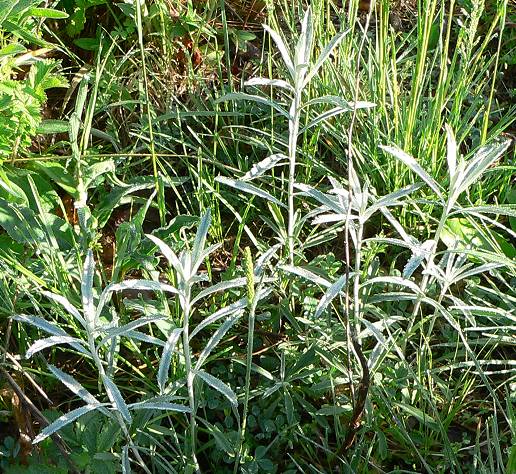
I was finally successful at mating one of my Polyphemus Moths. I got tired getting up at night, so I made a cage with larger holes in the sides, so they can mate through the holes. I left the female outside, in the cage, and by the next morning she had attracted a male and they were mating. I got several dozen eggs before I released her, so I’m hoping to raise a new generation of Polyphemus caterpillars this summer.
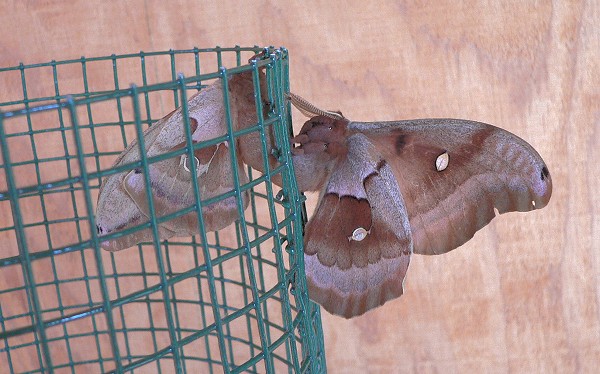
I worked on girdling some gigantic Aspens on the slope below Big View Prairie. They’re about 15 inches in diameter and the bark is at least an inch thick. I can do small trees in less than 30 seconds, but these big ones take 15 minutes each, and it’s very hard work. I’ll be glad to be finished with that front bluff.
On the way back to the house I saw a Common Yellowthroat nest in the woods next to Corner View Prairie.
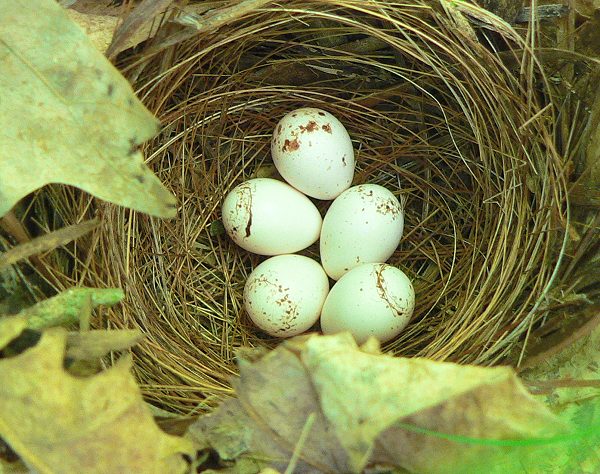
And on my way across Western Prairie, I nearly stepped on a very well hidden Vesper Sparrow nest.
Western Prairie has large areas of blooming Hawksbeard (Crepis tectorum).

Hawksbeard is a non-native annual weed. I don’t think it’s a terrible problem in the prairie – it seems to disappear as the prairie matures. This is only the prairie’s second year, and it’s everywhere. Sprinkled in with the Hawksbeard are many prairie plants – mostly not flowering yet – but I did find some blooming Prairie Phlox.

Mike has started mowing the cornfield – the last piece of Western Field that we have left to plant. He’ll mow it every few weeks this summer, and then I’ll plant it this winter. This is a view looking towards the south, with the south end already mowed.

There are some beautiful summer flowers starting to bloom.
Purple Twayblade (Liparis lilifolia) is a native orchid that grows in savannas and wooded prairie edges.
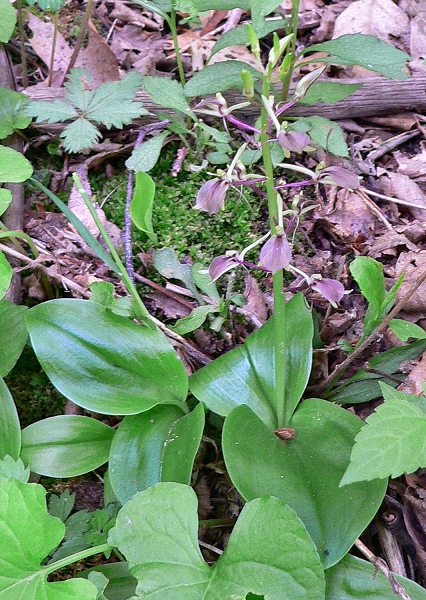
This is a closeup of the flower stalk.
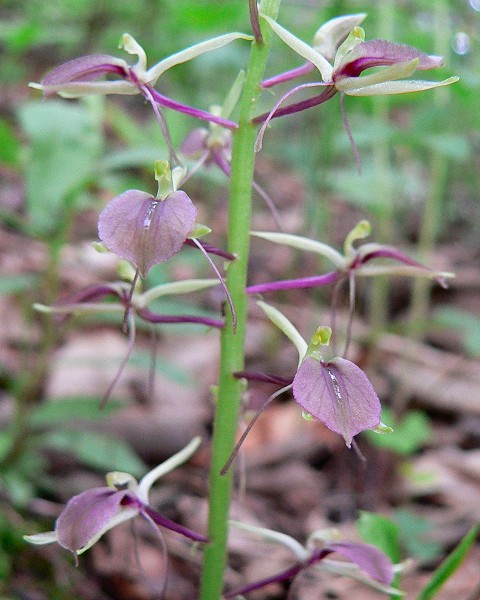
And this is even closer.
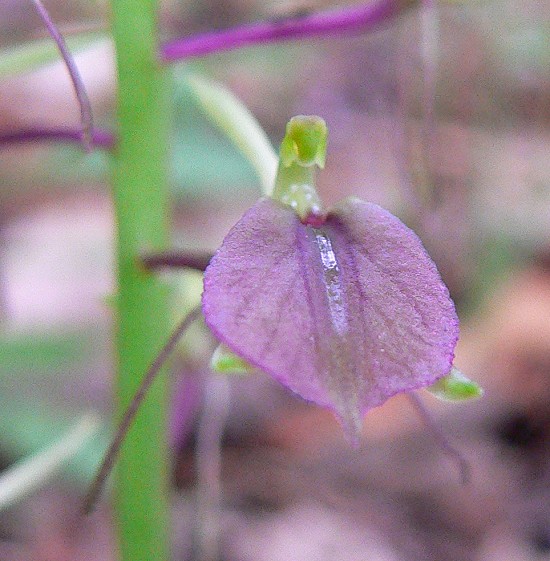
Spiked Lobelia (Lobelia spicata) is blooming in the bluff prairies.
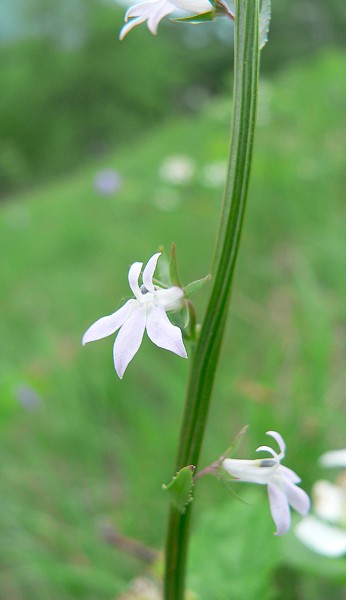
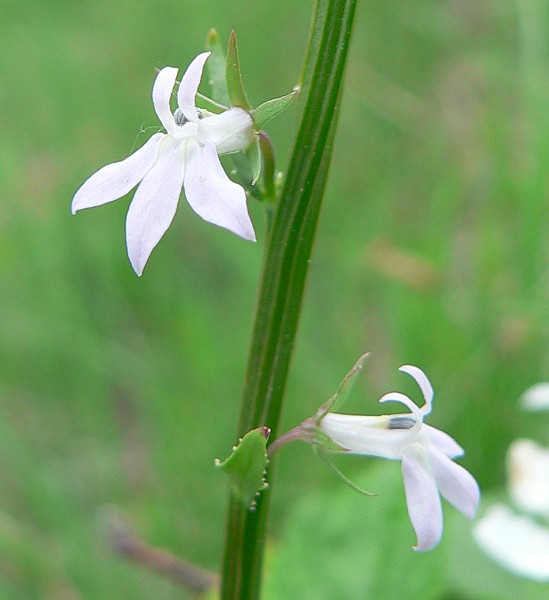
BalsamRagwort (Senecio paupercula)

Spiderwort (Tradescantia ohiensis)
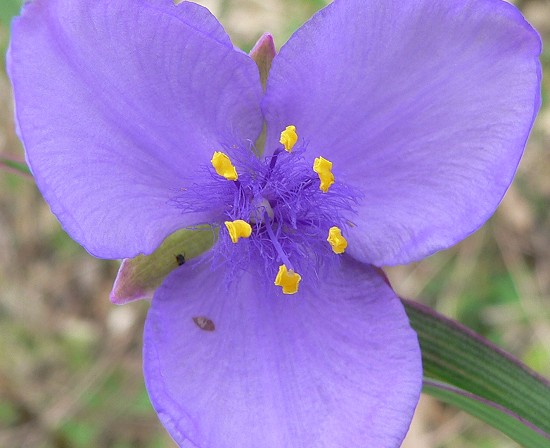
Prairie Smoke (Geum triflorum) is going to seed in the Narrow Prairie.

There are still some flowers blooming in the woods. This is Wild Lily-of-the-Valley (Maianthemum canadense).

Starflower Opening is full of Robin’s Plantain (Erigeron pulchellus)

And Yellow Stargrass (Hypoxis hirsuta).
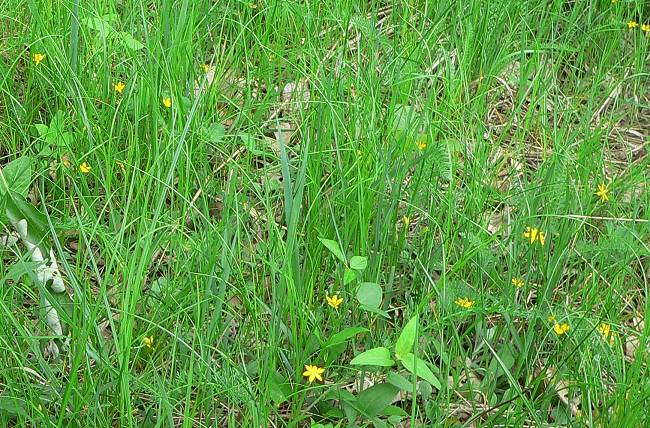
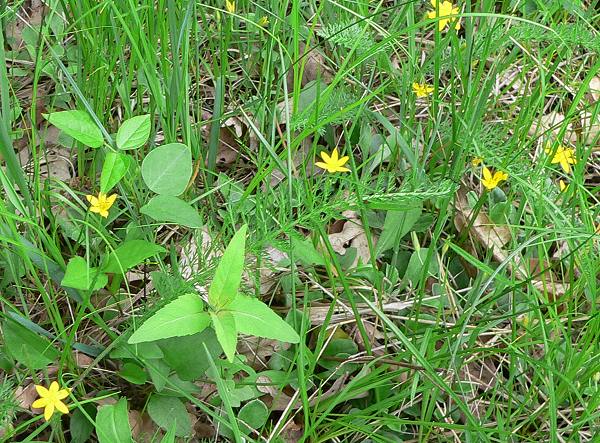
The Pussytoes plants (Antennaria sp.) have many caterpillar nests – they’re the nests that American Painted Lady caterpillars make as protection when they’re eating the leaves. Here’s one nest.

This caterpillar is very well hidden – sometimes the nests are more transparent and it’s easier to see the caterpillar inside.
I’ve been noticing that some of the “old field” areas we have are looking better – more natives are blooming this year than I’ve seen before. I’ve been trying to figure out how we’re going to return those areas to prairie. We may be able to avoid spraying – we could mow and burn, and then start adding prairie seeds to increase the plant diversity.
This is the old field below Starflower Ridge. Blooming plants are Wild Geranium and Black Raspberry. Not blooming are Figwort, Culver’s Root, Violets, Giant St. John’s Wort, and Jacob’s Ladder.
